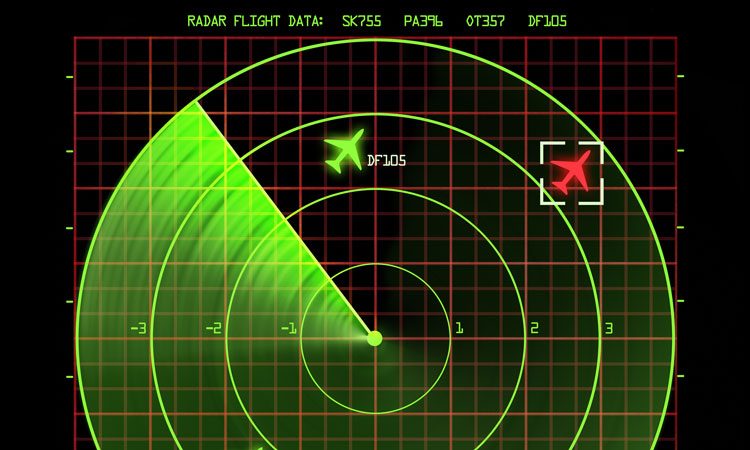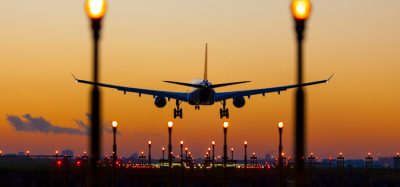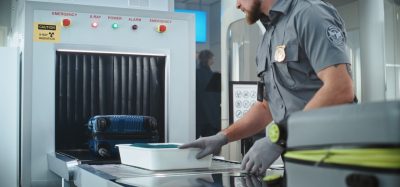ATC/ATM: Dealing with new entrants to our airspace
Posted: 18 January 2017 | Jeff Poole | Director General | CANSO | No comments yet
Unmanned aerial systems are a game-changer and an exciting opportunity to change the way people, businesses and State organisations do things. Jeff Poole, Director General at the Civil Air Navigation Services Organisation (CANSO), queries how drones can safely be incorporated into our airspace.


The air traffic management (ATM) industry has a good record of embracing and welcoming new technology and new entrants to airspace. Currently, these new entrants include commercial space vehicles; balloons, that provide internet access in remote areas; and unmanned aerial systems (UAS). But what is different about these new entrants is that they are not just operating in the airspace predominantly used by civil aviation but are operating in upper airspace above 60,000 feet and also in very low level (VLL) airspace below 500 feet.
The task of the ATM industry is to work with the new entrants, industry partners and regulators to ensure they can be embraced proactively and incorporated safely into airspace. We must also determine how the integration of new technology and new entrants can help the entire airspace ‘system’ move forward and become more efficient and safe.
Integrating UAS safely into airspace
UAS or drones are becoming an increasingly common sight in our skies and are causing concern about safety and security, particularly around airports. However, drones are here to stay with many positive benefits so all stakeholders, including the UAS community, need to work together to safely integrate them into airspace. Managing the safe and fair integration of UAS into airspace, while ensuring the safety and efficiency of all aviation operations, has four main challenges.
Join us live: Shaping the Next Generation of Hold Baggage and Air Cargo Screening
Join us live for an insightful webinar on 11th December at 14:00 GMT, in collaboration with Smiths Detection, as we explore the strategic balance of operational efficiency, regulatory compliance, and sustainability in high-volume security environments.
This session offers a focused look into future-proofing your security strategy.
Key learning points
- Cost Reduction: Strategies to minimize bag travel time while simultaneously reducing operational costs.
- Regulatory Roadmap: Insights into the next wave of regulatory changes and their impact on future investment decisions.
- Sustainable Systems: Practical approaches to building sustainability into security systems and lowering the total cost of ownership (TCO).
- Scalable Solutions: Real-world examples of scalable systems supporting current airport growth and preparing for tomorrow.
Register now for expert insights, case studies, and actionable strategies on operational efficiency!
First, UAS are unique and varied aircraft. Their speed, manoeuvrability, climb rate, and other performance characteristics, together with their avionic system equipage, can differ substantially from more familiar, conventional aircraft. If unregulated, UAS can fly without limitations and beyond line of sight.
Second, experience of UAS operations and their interaction with the existing ATM system indicates they are currently unable to comply with many standard and routine ATM procedures, including contingency operations and emergency management.
Third, the operation of UAS or drones in the vicinity of airports is a growing concern and a very real threat to safety. The question here is not about integration but about how to prevent unauthorised use in the airspace where drones could cause real dangers. Some States are introducing ‘no drone zones’ around sensitive areas including airports.
Fourth, we are seeing non-traditional users entering airspace that do not have the training or awareness of traditional users and do not consider themselves as aircraft operators. We are therefore dealing with new and unfamiliar mind-sets and need to bridge the gap between ATM and non-traditional users. Having said that, we need to differentiate between private recreational users of drones and the professional operators and users of UAS and drones. The professional operators are very focused on the safe operations of drones, because it is an essential prerequisite for the success of their business models; like aviation, they cannot afford accidents and/or a poor safety record.
UTM: ATM for low-altitude UAS
So, how can UAS operate safely without being a threat to civil aviation? The main potential danger areas have tended to occur during the approach and, to a lesser extent, the departure phases of flight of manned aircraft around airports. The VLL altitude structure below 500 feet was previously deemed as not controllable and is based on regulations established in the 1940s and 1950s. Apart from the occasional low-flying helicopter, and approach and departure of manned aircraft around airports, this airspace remains largely unused by civil aviation. But this VLL airspace is the chief area of operations for the UAS community. So this is clearly the area where we need to focus our efforts.
Due to the numbers and the diversity of UAS, an infrastructure is needed to support the safe operation of drones in those parts of the airspace that are opening to UAS operations. That future infrastructure is becoming known as UAS Traffic Management or UTM. Although a great deal of work is underway, it is not yet clear what a UTM system would look like and how it would operate. But, broadly speaking, a UTM system would aim to enable safe and efficient low-altitude airspace operations by providing services such as airspace design; corridors; dynamic geo fencing; severe weather and wind avoidance; congestion management; terrain avoidance; route planning and re-routing; separation management; sequencing and spacing; and contingency management.
Like many new and emerging industries, such as satellite broadcasting, mobile telephony and the Internet a few years ago, UTM is developing in a largely uncoordinated way with a number of different organisations and commercial companies working on various proposals. As with those earlier industries, perhaps the principles, functions, and organisation of the future UTM could emerge from a combination of the most successful initiatives. But unlike those industries, which were breaking new ground, the UAS industry is developing alongside another long-established industry, namely manned civil aviation. As UAS will share the airspace with manned aircraft under the responsibility of air navigation service providers (ANSPs), UTM cannot develop in isolation from the existing air navigation services (ANS) system.
One of the main challenges for the establishment of future UTM will be to reconcile two communities operating under very different cultures and business models. The ATM industry and those companies and organisations developing UTM need to work together to facilitate understanding of exactly what UTM is; how it will work; and how it will integrate with ATM.
CANSO supports active collaboration between the manned aviation stakeholders, regulators, UAS manufacturers and companies developing UTM functions. This opens an invaluable opportunity for the manned and unmanned communities to collaborate and learn from each other.
Technology developed for UTM systems could potentially be used to enhance existing ATM systems and technologies and could lead to the next performance breakthrough; and the UAS community could learn from the integrated safety management framework that has been developed in ATM. Our main concern and our driving priority will continue to be safety, particularly appropriate safety at boundaries or buffer zones between what might be termed UAS airspace and the airspace controlled by ANSPs.
Regulation
Another area that requires full cooperation across all airspace users, regulators and industry partners is regulation of UAS. The regulatory landscape is very complex. Many states have established some UAS regulations but these vary from State to State with differences on, for example, weight limits, distance from aerodromes, and operating altitudes. This is resulting in a patchwork of different regulations which could lead to confusion among UAS users and hinders the ability of the UAS community to educate users on safe and legal operations.
CANSO advocates a global and harmonised approach to regulation that is performance-based and is focused on outcomes, not prescriptive requirements. Such an approach is essential for UAS, as is recognition that concepts of operations and mitigating technologies can contribute significantly to regulation and self-regulation. We are advocating specific measures including; public awareness campaigns for UAS users; registration of all UAS owners; and certification and training for those using UAS.
What CANSO is doing
CANSO is producing a series of training materials to help ANSPs incorporate remotely piloted aircraft systems (RPAS) and drones into airspace such as our publication ANSP Considerations for RPAS Operations, which we are currently updating. In the next couple of months, we will also complete a digital ATC Training Syllabus for RPAS Operations, available to CANSO members on the CANSO website.
CANSO is also fully involved in panels and groups on the UAS issue at the International Civil Aviation Organization (ICAO), and in Europe we are actively supporting the activities undertaken by the Single European Sky ATM Research Joint Undertaking (SESAR JU). However, we need to do more to make sure all stakeholders in the UAS issue are working together to ensure an agreed and common framework for safe and full integration of UAS in an evolution of airspace. CANSO is taking a lead by bringing the various stakeholders together.
The role of the States
States play an important role in determining the structure and rules for safely incorporating UAS into airspace. CANSO is asking States through ICAO (mainly through the Small Unmanned Aircraft Systems Advisory Group) to take action in three broad areas.
First, while UAS regulation is a matter for nation legislation, to ensure safety for a global industry we would like to see ICAO produce globally harmonised regulation for UAS to ensure all countries adopt the same standards and give certainty and simplicity for UAS operators.
Second, to better understand the potential safety implications of UAS, we have called for ICAO to undertake a study on the risks from UAS, particularly the risk of collisions; gather data on UAS sightings and near misses around planes.
Third, we are asking ICAO to define requirements for States to ensure that adequate training and awareness for UAS users are imposed on all UAS manufacturers.
These points form the basis of a paper CANSO submitted to the recent ICAO Assembly. In addition, for UAS operators we want to see mandatory licensing and training. ICAO and States must act with a real sense of urgency in this fast-growing area of UAS.
Conclusion
UAS are a game-changer and an exciting opportunity to change the way people, businesses and State organisations do things. In particular, we in ATM are facing something new; something we are not used to and we have to rethink some of our traditional approaches to ATM.
One of the three pillars of Vision 2020, CANSO’s strategic plan for ATM, is partnership; and effective partnership really lies at the heart of our approach to UAS and drones. We are working with all stakeholders to understand and balance the different needs of airspace users so they can operate safely and we now need urgent action from ICAO to ensure there is a robust framework that States can adopt so UAS can operate safely in airspace.
For its part, CANSO will maintain an overriding priority on safety; driving the global transformation of ATM performance, while ensuring the safe and effective integration of UAS and UTM with airspace and ATM. We advocate a partnership approach between all key stakeholders on UAS that recognises the different interests, concepts and thinking. Alignment and harmonisation can be achieved through common policies, procedures, standards, terminology and architecture; underpinned by a clear, harmonised regulatory framework based on the principles of performance-based regulation. CANSO will promote awareness, education and training of UAS and drone users.
Our commitment is to help open the skies safely for new, responsible users while at all times maintaining and further improving safe, efficient and harmonised airspace.
Biography
Jeff Poole has been Director General of CANSO since December 2012. In addition to leading and managing CANSO, he represents its Members as the global voice of air traffic management. He is responsible for delivering the CANSO strategic plan for air traffic management, Vision 2020; further expanding CANSO’s worldwide membership; and governing CANSO’s relationship with its industry peers and stakeholders. Jeff previously served at the International Air Transport Association (IATA) from 2004-2012 in roles including: Director, Government and Industry Affairs, with a mandate to further develop a strong, credible and proactive IATA role in that area; and Director Industry Charges, Fuel and Taxation. In this role he was responsible for achieving significant reductions in airport costs and air navigation charges for IATA Member airlines. Prior to joining IATA, Jeff held positions at Airbus and BAE Systems and has extensive experience of working with Governments and major international institutions.
Stay Connected with International Airport Review — Subscribe for Free!
Get exclusive access to the latest airport and aviation industry insights from International Airport Review — tailored to your interests.
✅ Expert-Led Webinars – Gain insights from global aviation leaders
✅ Weekly News & Reports – Airport innovation, thought leadership, and industry trends
✅ Exclusive Industry Insights – Discover cutting-edge technologies shaping the future of air travel
✅ International Airport Summit – Join our flagship event to network with industry leaders and explore the latest advancements
Choose the updates that matter most to you.
Sign up now to stay informed, inspired, and connected — all for free!
Thank you for being part of our aviation community. Let’s keep shaping the future of airports together!
Issue
Related topics
Air traffic control/management (ATC/ATM), Drones, Regulation and Legislation, Safety

















